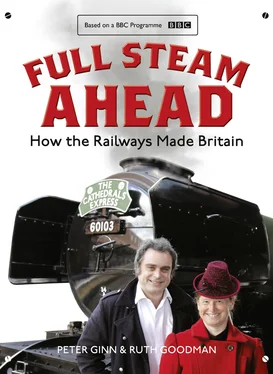Many of the projects we have undertaken before, both for the purposes of television and for research, and have been concerned with rediscovering lost skills. Having now embarked upon a project studying the railways, we have had the chance to contextualize our work by studying the industrial side of a society that was experiencing a growing population shift from the agricultural to the urban.
Why did railways have such an impact on society? It is chiefly because of the speed of travel that they facilitated and the extent of the network that was built to support them. Not a single British railway mainline track was constructed in the twentieth century: all were created in the nineteenth century. The railways linked tiny villages and even hamlets with towns, cities and ports. Suddenly, people could pay some money for a ticket, get on a train and be in the centre of a growing metropolis or in the middle of nowhere within a matter of hours or minutes. The roads had previously linked settlements together, but they were very poorly constructed and journey times were long. Relatively speaking, the railways allowed people to travel great distances in no time at all.
“ONCE THE IDEA OF A MOVING ENGINE WAS PROVEN TO BE VIABLE, IT LED TO A FRANTIC CREATION OF RAILWAYS ACROSS THE GLOBE.”
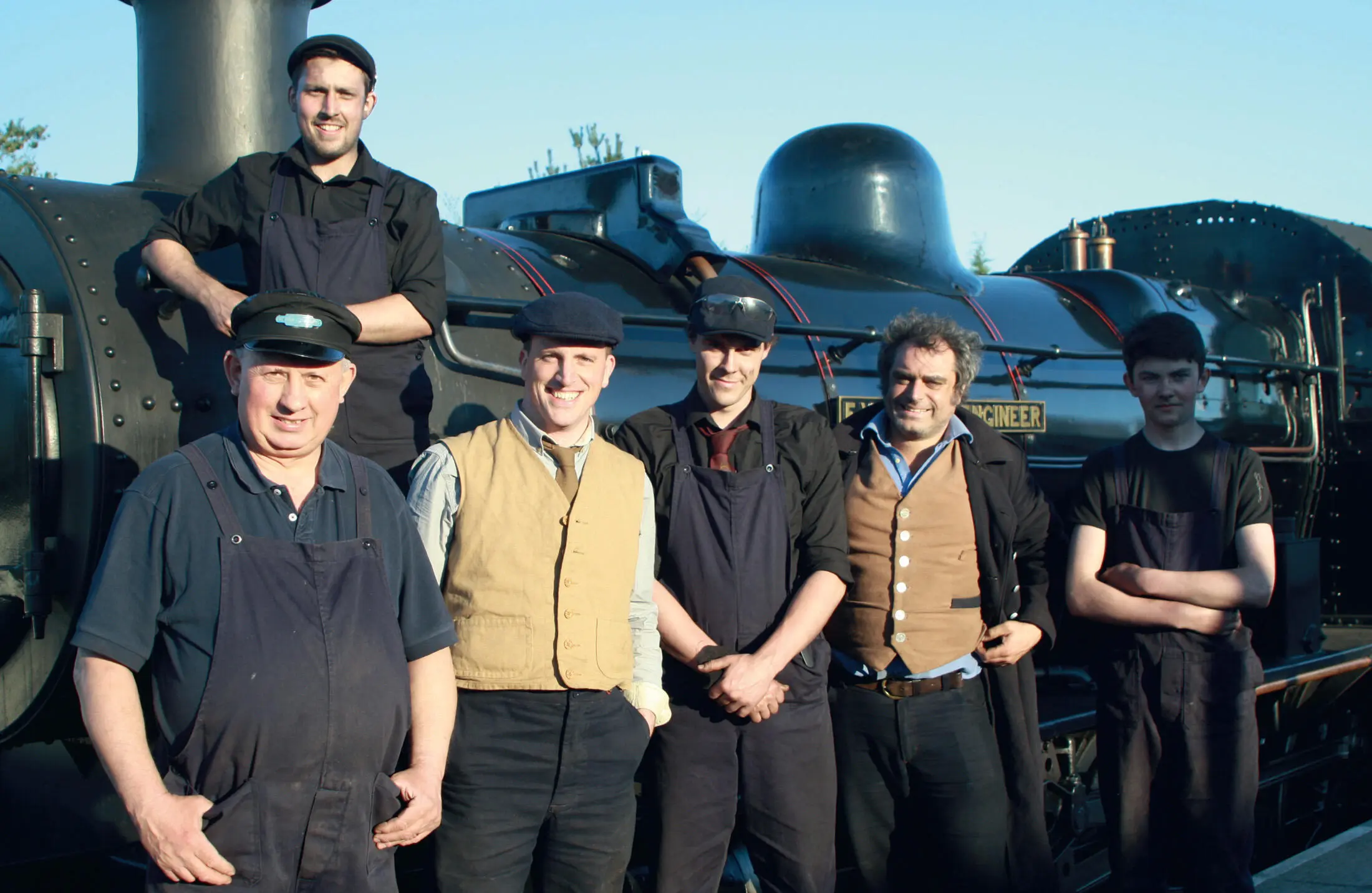
Presenter Peter Ginn pictured together with the Strathspey whisky distillery team, in front of the preserved railway that serves the factory.
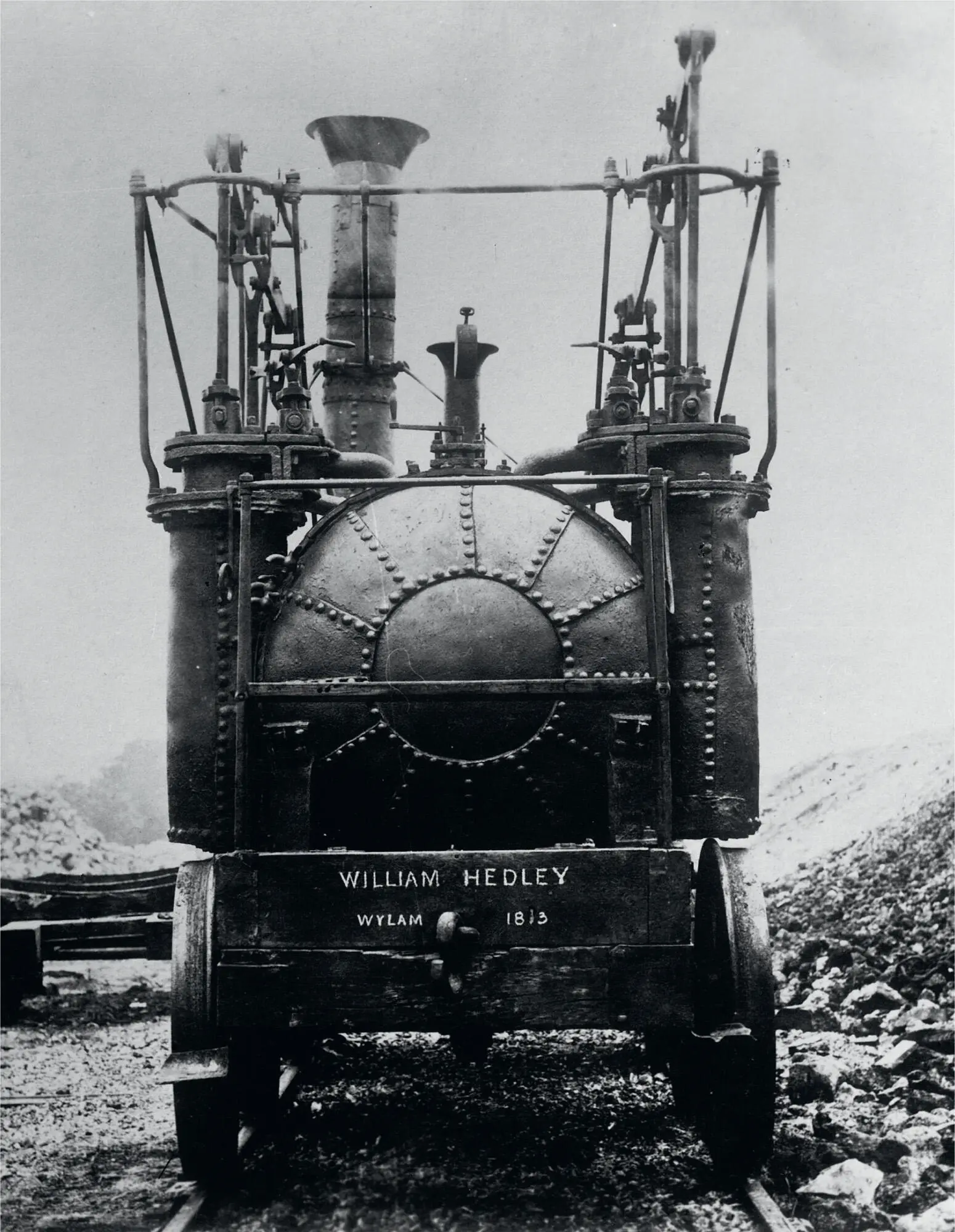
Wylam Dilly , sister locomotive of Puffing Billy , photographed in 1862. Suddenly, what had once been only static engines could move, opening up a whole new era in the transportation of both goods and people.
“THE WAY THAT VICTORIAN PEOPLE VIEWED SOCIETY AND INTERACTED WITH ONE ANOTHER CHANGED FOR GOOD.”
Much of nineteenth century industry involved the movement of great weight and bulk – huge amounts of what is collectively known as ‘tonnage’. Lumps of iron, piles of coal, gallons of beer for the workers – they all needed transporting. For the first time ever, the railways enabled heavy materials to be moved quickly and on time. Yet, as much as industry built the railways, the railways built industry. This speed of movement also allowed ideas to travel quickly. Vast quantities of newspapers thundered up and down the country on trains as circulations increased and the telegraph network that accompanied the railways permitted information to be relayed at the speed of light. Something could happen in the Highlands of Scotland, be reported to a newspaper office in London, be printed and then be on sale in a shop in Aviemore, back in the Highlands, before the dust had settled. Suddenly, the whole world was moving at a pace not seen before in human history, and communications would never be the same again.
Consequently, the world became a much smaller place. Developments in the railways in Britain occurred alongside economic, social and political changes and advancements being made in America, Europe and beyond. Lessons were learned and thoughts were shared. A product designed in a small village in Wales could have a major influence on peoples’ lives in northern Russia. As much as railways were pioneered in Britain, their evolution was a worldwide affair.
The way that Victorian people viewed society and interacted with one another changed for good. For a start, if it was ten o’clock in Swansea, then for the first time ever it was also ten o’clock in Newcastle. The introduction of what was known as ‘railway time’ saw to that ( see here). The island became unified in a way that it had never been before. The speed of the new transport system also meant that no longer did people have to seek employment close to where they lived. Trains allowed people to commute to work, for the first time ever. The railways also removed the social and economic constraint of having to grow enough food to support a local community. Food imports were nothing new, but until the railways were built, food that spoiled easily – such as fish, milk or vegetables – had to be sourced close to where a population lived. The railways could import these commodities quickly, in some instances faster than it is possible to do so today using an existing courier network. This allowed the countryside to concentrate on the cultivation of perishables and the cities no longer needed to be in easy reach of green fields or had to keep milking cows in an urban environment. Suddenly, the cities could expand and focus on industry instead of agricultural concerns.
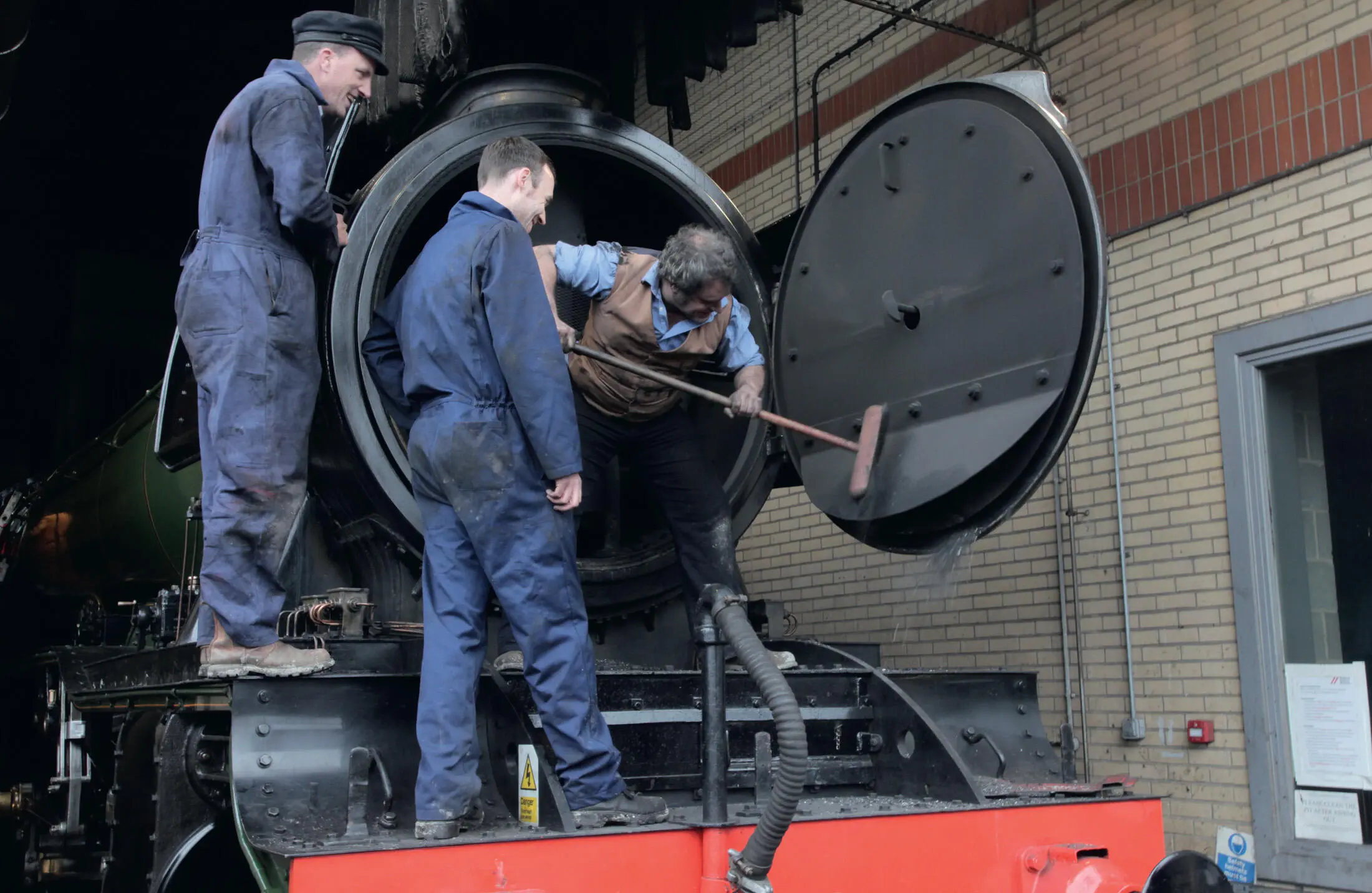
Presenters Peter Ginn and Alex Langlands giving a preserved steam engine a thorough cleaning in the time-honoured – and very necessary – fashion.
Trains cut through impoverished urban environments and gave many their first taste of how the other half lived. This new, widespread awareness of the proliferation of urban slums in Victorian Britain prompted much of the social reform that began in the nineteenth century. Trains also offered travel that was affordable to all but the very poorest, altering the way that the economic classes interacted and changing the natural barriers in Victorian British society.
As a general rule, historians find it difficult to isolate events in history and argue their impact upon society, when they are so well woven into the continuous tapestry of life. However, it is perhaps because of how embedded steam railways are in the development of the modern world that allows us to say they changed the world. Our lives right now are a direct result of the innovators, visionaries, designers, workers and daily users that created and advanced the steam railways. Had that development not have happened as it did, we would be living in a very different society today. Arguably, many of the problems we face today are an indirect consequence of economic, social and political developments in the nineteenth century, but so too are the solutions. Thanks to the introduction of the railways, we may have lost some sense of British regionality , but we can offset that against a sense of British unity.
“TRAINS CUT THROUGH IMPOVERISHED URBAN ENVIRONMENTS AND GAVE MANY THEIR FIRST TASTE OF HOW THE OTHER HALF LIVED.”
It is impossible to contain the entire story of the railways in only one volume. There are countless little anecdotes and backstories that deserve coverage but which would fill many hundreds of pages beyond those contained in this book. For example, did you know that when the Flying Scotsman was running low on supplies or had an onboard emergency, the crew would write a note, insert it into a potato and throw it at a signal box as the train passed by? They did this because, at the time, there was no other way to contact or alert the outside world. However, once the signalman had received the flying potato with its important missive, he could telegraph ahead to ensure that the speeding train’s problem could be addressed further down the line.
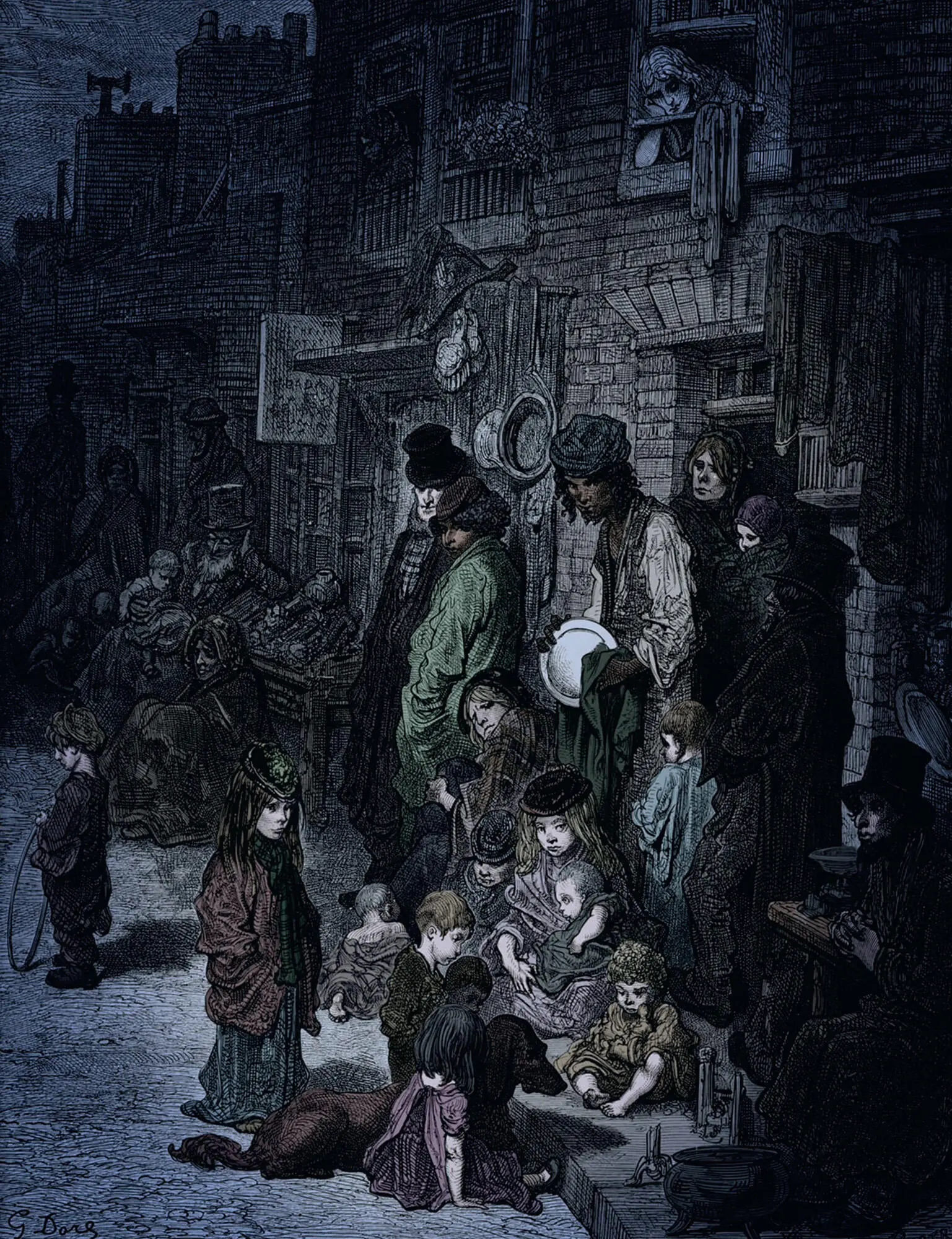
The railways gave many people an insight into the horror of urban slum dwellings for the first time. This is Wentworth Street, Whitechapel, in Victorian London, as depicted in an engraving by Gustave Doré, 1872.
Читать дальше
